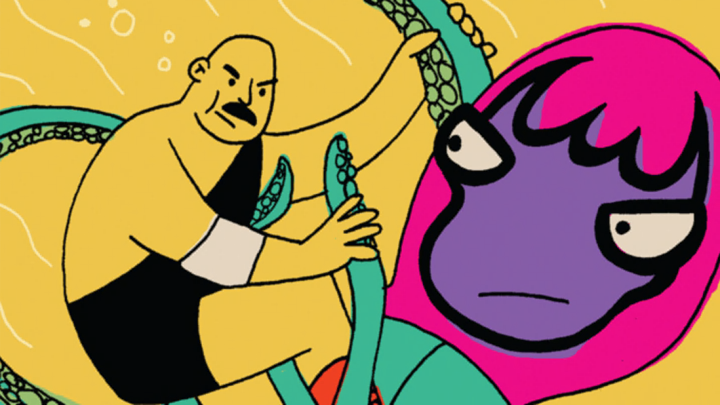This craze that swept the chilly waters of Washington’s Puget Sound in the 1950s and ’60s won’t be making a comeback. Here’s what you need to know about it.
Was it a real fad?
Absolutely! At the height of the sport’s popularity, dozens of top wrestlers gathered in Tacoma in front of a crowd of thousands to compete in the World Octopus Wrestling Championships.
So, how do you wrestle a slippery eight-armed opponent?
With the help of friends. Working in teams of two or three, divers would descend as far as 60 feet to the octopus’s lair. The team would actually “wrestle” the octopus by painstakingly detaching the creature’s suction cups and unwrapping its tentacles before slowly bringing the quarry to surface. Once on shore, the giant beasts— which grow as large as 20 feet from tentacle tip to tip and can weigh up to 150 pounds— were tossed on a scale for judging.
Any tricks for success?
Mainly patience. Also, remembering that you’re not wrestling a person. A 1964 True magazine piece summarized what made the grappler O’Rourke such a legend: “He knew full well the futility of trying for a crotch hold on an opponent with eight crotches.”
What happens to the octopus?
Once brought to surface and weighed, defeated octopi would hang out in aquarium tanks until the judging was over. Some were sent to local research labs, but most were escorted back into the ocean.
Why is it never on SportsCenter?
Washington killed the trend with a 1976 law that made it a misdemeanor to “molest” or “harass” an octopus. So far, zero dolphins have been brought in on charges.
The bad reputation
According to three-time octopus wrestling champ Gary Keffler, giant Pacific octopuses get a bad rap. As he told The Seattle Times, “People always hear these awful stories about them, killers of the deep. The ones we have here are pretty laid-back.”
Want more amazing stories like this? Subscribe to mental_floss magazine today!
